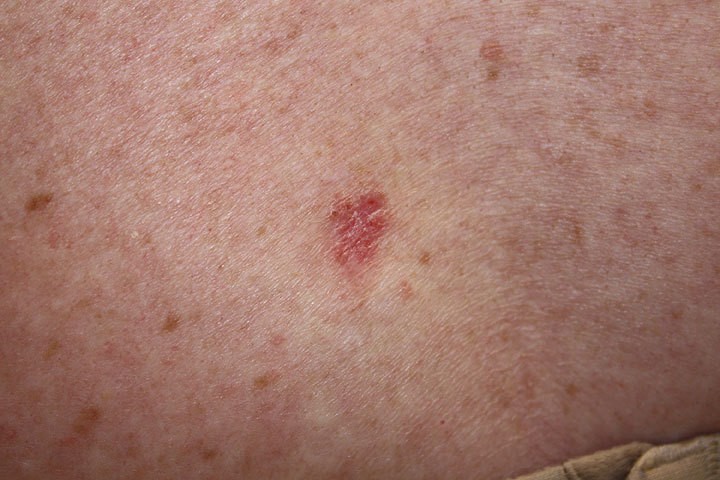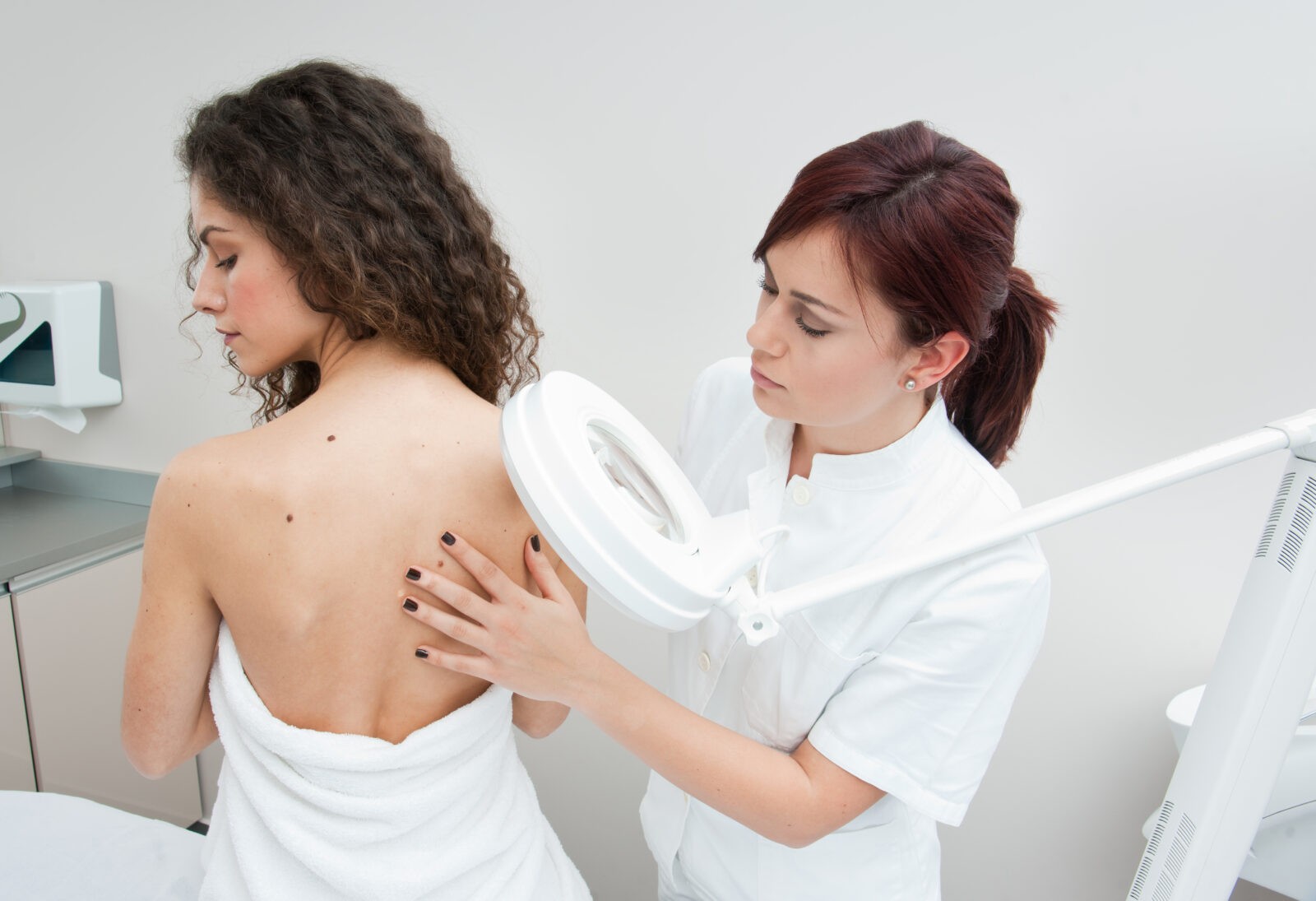MOHS RECONSTRUCTION
SKIN CANCER REMOVAL – MOHS
Skin cancer is the most common form of cancer In the United States, with more than one million cases that were diagnosed each year according to the Skin Cancer Foundation.
Every year in the United States there are over 5.4 million cases of non-melanoma skin cancer such as Basal Cell Carcinoma and Squamous Cell Carcinoma. In 2017 over 87,110 new cases of melanoma were diagnosed. Almost 90% of non-melanoma skin cancers are associated with exposure to UV (ultraviolet) radiation from sunlight. Like many other cancers, skin cancer may require surgical excision. When a tumor is cut out layer by layer, this procedure is called Mohs surgery.

HOW DOES IT WORK?
Dr. Brown works closely with a Mohs Surgery specialist who removes skin cancers using the Mohs Procedure. Dr. Brown performs hundreds of reconstructions for open wounds that are created by Mohs Surgery every year. Often times these wounds are in the head and neck region, and Dr. Brown will make every effort to restore and repair your surgical wounds with as few scars as possible while making them as cosmetically hidden as possible.
Your Mohs Surgeon will remove the skin cancer completely before Dr. Brown performs the reconstruction. The wound will be bandaged by your Mohs Surgeon until you see Dr. Brown for your reconstruction. After your skin cancer has been removed, Plastic Surgeon Dr. Brown pays particular attention to repair the defect as close to normal as possible. Dr. Brown is well-trained in performing these surgeries and often works in conjunction with a dermatologist. In most cases, the wound will be closed the same day by Dr. Brown, but sometimes it may occur several days after the excision.

AM I A GOOD CANDIDATE FOR MOHS RECONSTRUCTION?
If you have skin cancer especially in the head and neck region you are a good candidate for Mohs Surgery removal of your skin cancer. Melanoma is not typically removed by Mohs surgery. This is typically removed directly by a Plastic Surgeon or General Surgeon.
Skin cancer is extremely common on the face, especially in the desert environment of Arizona. Pay attention to the following:
- Color – mole pigmentation is not uniform. Shades of tan, brown and black are present. Dashes of red, white and blue add to the mottled appearance.
- Changes in color distribution, especially the spread of color from the edge of a mole into the surrounding skin.
- Size Change – any growth of a mole should be of concern and so should the thickening or raising of a previously flat mole.
- Surface – scaling, erosion, oozing, bleeding, crusting, or softening.
- Surrounding Skin – redness, swelling, or small new patches of color around a larger lesion
- Sensation – itching, tingling, or burning.
CONSULTATIONS ARE AVAILABLE NOW
Take the first step. Get your questions answered and find out which treatment options are best for you by meeting with Dr. Brown and a member of his staff at Brown Plastic Surgery for an in-person consultation. Simply fill out the form on this page, and one of our experienced team members will reach out to you promptly to schedule your consultation.
“Dr. Brown made my surgical experience so easy. He explained exactly what could happen, and what procedures he would be doing in response to each situation. His easy manner put me right at ease. Having skin cancer bad enough to have the end of your nose cut out is scary. Not knowing what you will look like after is really scary. The skin graft Dr. Brown did is beautiful! You can hardly see it. If I ever have to have surgery again, I will go to Dr. Brown”*
THE MOHS RECONSTRUCTION PROCEDURE
The Mohs Procedure is performed by a special Dermatologist Mohs Surgeon. You will be seen in the Mohs Surgeon’s office and under local anesthesia, they will remove the skin cancer layer by layer. This can often times take several hours. Once the Mohs Surgeon has removed all of the skin cancer cells they will bandage the wound and you will then meet with Dr. Brown at the designated time for reconstruction of the wound.
MOHS RECONSTRUCTION RECOVERY*
Swelling and bruising are normal signs of the healing process. Swelling peaks about 48 hours after surgery then rapidly decreases. By the end of the first few weeks, the majority of the swelling is gone.
By 6-8 weeks, most of the residual swelling has diminished. You may usually shower within 24 – 48 hours. Your incisions should not be submerged in a swimming pool or hot tub and should be kept out of a sauna until cleared by Dr. Brown.
During the first several days, patients may sleep with the head slightly elevated to reduce swelling. Often times ice may be applied to the area unless instructed not to use ice. Most patients are up and walking around the day after surgery. Strenuous exercise and bending over with the head down should be avoided for 6 weeks.
These are general guidelines, and Dr. Brown will give you more specific instructions at your visit. You should not drive or operate vehicles until you are cleared by Dr. Brown to do so. You may have sutures or bandages that need to be removed by Dr. Brown at your one-week post-surgical visit. Scars and skin grafts will mature and change for a full 12 months after surgery.
You will be seen in our office one week after surgery, and schedule follow-ups accordingly thereafter.
TAKE THE FIRST STEP – REQUEST A CONSULTATION
Please fill out the form on this page to request an in-person consultation and one of our knowledgeable medical staff members at Brown Plastic Surgery will reach out to you promptly. You can also call our Scottsdale or West Valley offices directly to schedule at +1 480-947-2455. Brown Plastic Surgery serves the Scottsdale and West Valley areas.
*Individual results may vary*

PATIENT TESTIMONIALS
"Hi, my name is Diana. I am a patient of Dr. Richard J. Brown. I started my breast reconstruction on March 23, 2012 after having a double mastectomy in May of 2012. Dr. Brown has done an amazing job, my progress is great and my breasts are beautiful once again. Dr. Brown is very compassionate and professional. Thank you Dr. Brown for giving me back what cancer took away from me."*. *Individual results may vary* "My experience with Dr. Brown and his staff has been nothing less than exceptional! It's been a long road. I just completed breast reconstruction/augmentation and removal of excess skin/fat from my upper arms following a 100+ pound weight loss. Very pleased with the early results! Not just highly recommended, but the highest recommendation ever!!!"* *Individual results may vary*- Diana R.
-Lisa W



